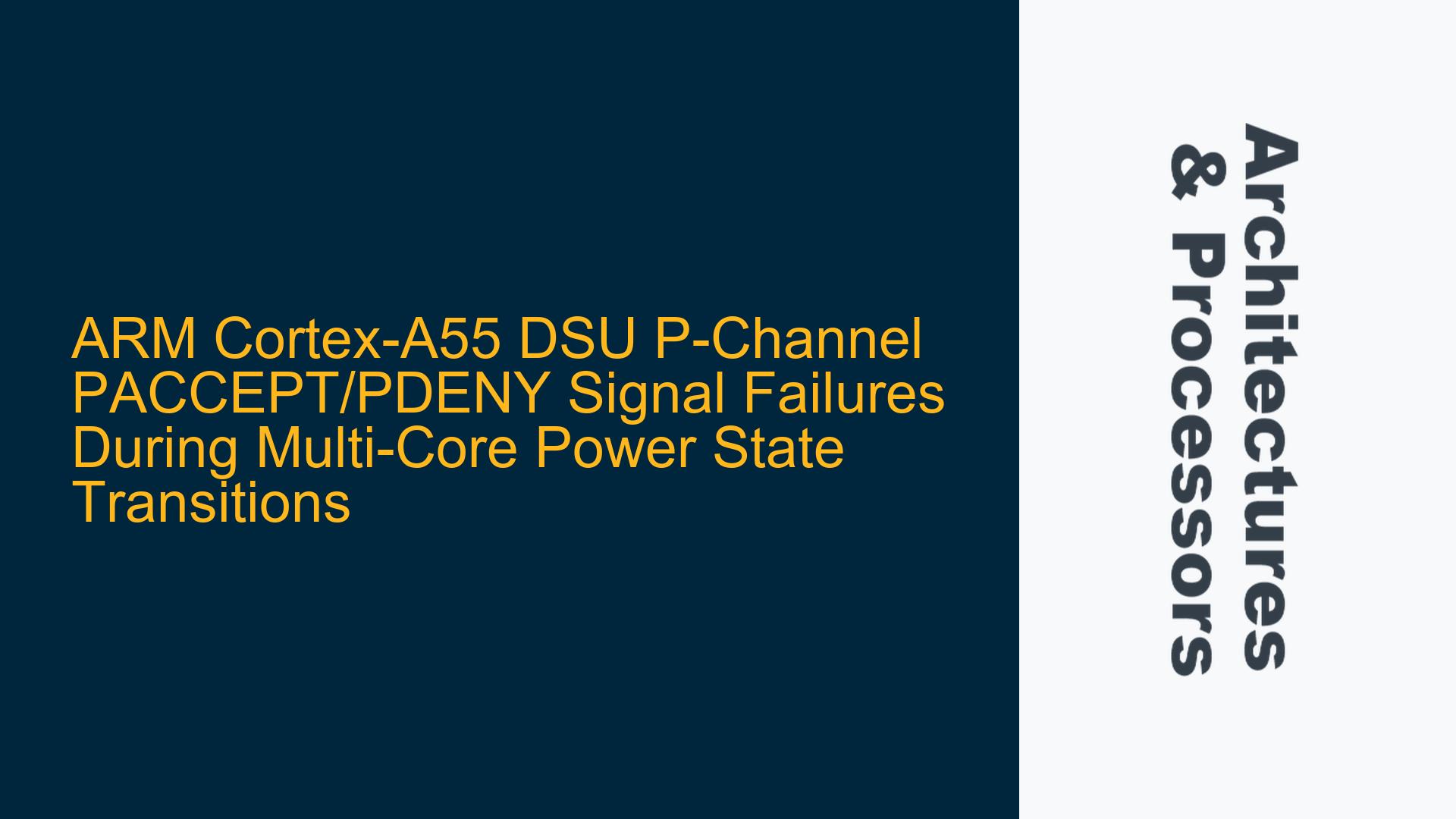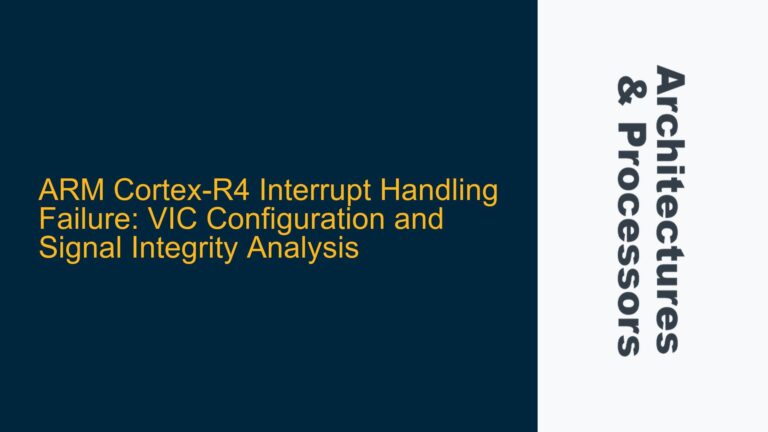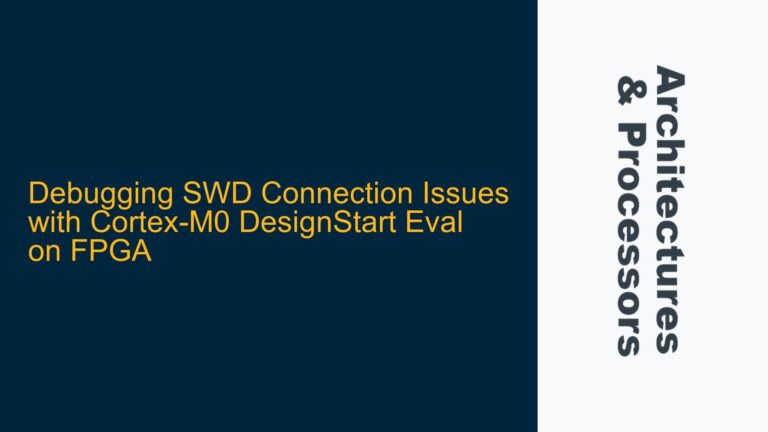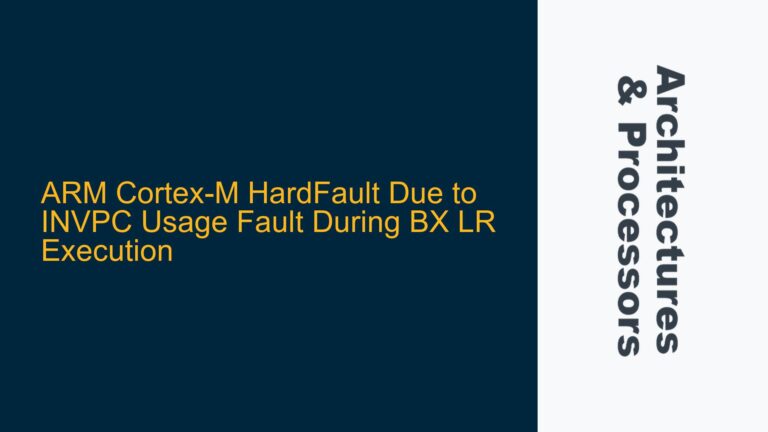ARM Cortex-A55 DSU P-Channel PACCEPT/PDENY Signal Behavior in Multi-Core Power Management
The ARM Cortex-A55 is a highly efficient mid-range CPU core designed for power-sensitive applications, often integrated into multi-core configurations. One of its key features is the DynamIQ Shared Unit (DSU), which manages shared resources and power states across multiple cores. The DSU implements the AMBA Low Power Interface (LPI) specification, which includes power management signals such as PACCEPT and PDENY. These signals are critical for coordinating power state transitions between cores and the DSU.
In scenarios where multiple Cortex-A55 cores are powered on or off in parallel, the PACCEPT and PDENY signals may exhibit unexpected behavior, such as both signals being deasserted (i.e., logic 0) simultaneously. This behavior is not inherently erroneous but indicates a specific state in the power management protocol. Understanding the root causes and implications of this behavior requires a deep dive into the LPI specification, the DSU’s power management logic, and the hardware-software interactions during power state transitions.
The PACCEPT signal indicates that a power state transition request has been accepted, while PDENY signals that the request has been denied. Both signals being deasserted simultaneously typically occurs when the system is in either the P_STABLE or P_REQUEST state, as defined in the LPI specification. However, in multi-core systems, this behavior can also arise due to timing issues, race conditions, or improper configuration of the power management unit (PMU).
Timing Issues, Race Conditions, and Power Management Configuration
The simultaneous deassertion of PACCEPT and PDENY signals in a multi-core Cortex-A55 system can be attributed to several factors, including timing issues, race conditions, and improper configuration of the power management unit. These factors are interrelated and often manifest during parallel power state transitions across multiple cores.
Timing issues can arise due to the asynchronous nature of power state transitions. When multiple cores attempt to transition their power states simultaneously, the DSU must coordinate these requests to ensure system stability. If the timing of these requests is not properly synchronized, the DSU may temporarily enter a state where neither PACCEPT nor PDENY is asserted. This is particularly likely in systems with high core counts or complex power management policies.
Race conditions occur when multiple cores or system components attempt to access shared resources simultaneously, leading to unpredictable behavior. In the context of power management, a race condition can occur if two or more cores attempt to transition their power states at the same time, causing the DSU to delay its response until the conflict is resolved. During this delay, both PACCEPT and PDENY may remain deasserted.
Improper configuration of the power management unit can also contribute to the observed behavior. The PMU is responsible for managing power state transitions and ensuring compliance with the LPI specification. If the PMU is misconfigured, it may fail to assert PACCEPT or PDENY in a timely manner, leading to ambiguous signal states. Common configuration errors include incorrect power state definitions, improper interrupt handling, and insufficient power domain isolation.
Diagnosing and Resolving PACCEPT/PDENY Signal Ambiguities in Multi-Core Systems
To diagnose and resolve issues related to PACCEPT and PDENY signal ambiguities in multi-core Cortex-A55 systems, a systematic approach is required. This approach involves verifying the power management configuration, analyzing timing and synchronization, and implementing robust error handling mechanisms.
The first step is to verify the power management configuration. This includes reviewing the PMU settings to ensure that power state definitions align with the LPI specification. Specifically, the P_STABLE and P_REQUEST states should be correctly defined, and the PMU should be configured to handle simultaneous power state transitions gracefully. Additionally, the interrupt handling logic should be examined to ensure that power state transition requests are processed in a timely manner.
Next, timing and synchronization issues should be analyzed. This can be done using logic analyzers or simulation tools to capture the behavior of the PACCEPT and PDENY signals during power state transitions. Special attention should be paid to the timing of power state requests from multiple cores and the DSU’s response. If timing issues are identified, adjustments can be made to the power management logic to improve synchronization. This may involve adding delays or implementing handshake protocols to ensure that power state requests are processed sequentially.
Race conditions can be mitigated by implementing robust error handling mechanisms. This includes adding checks to detect and resolve conflicts during power state transitions. For example, if two cores attempt to transition their power states simultaneously, the DSU can be configured to prioritize one request and delay the other. Additionally, the system can be designed to retry failed power state transitions automatically, reducing the likelihood of signal ambiguities.
Finally, it is important to validate the system’s behavior under various operating conditions. This includes testing the system with different core configurations, power management policies, and workloads. By thoroughly testing the system, potential issues can be identified and addressed before they impact the end user.
In conclusion, the simultaneous deassertion of PACCEPT and PDENY signals in a multi-core Cortex-A55 system is a complex issue that requires a thorough understanding of the LPI specification, the DSU’s power management logic, and the hardware-software interactions during power state transitions. By systematically diagnosing and resolving timing issues, race conditions, and configuration errors, engineers can ensure reliable and efficient power management in multi-core systems.






